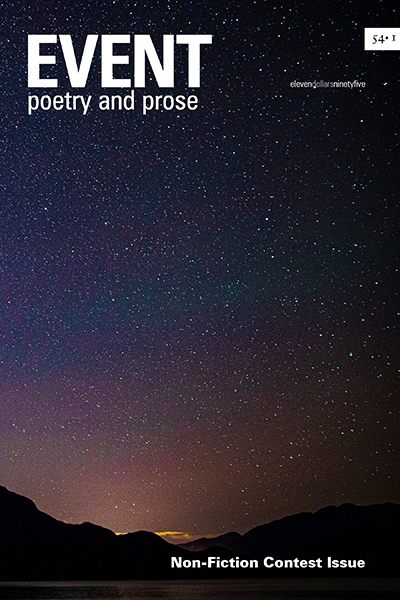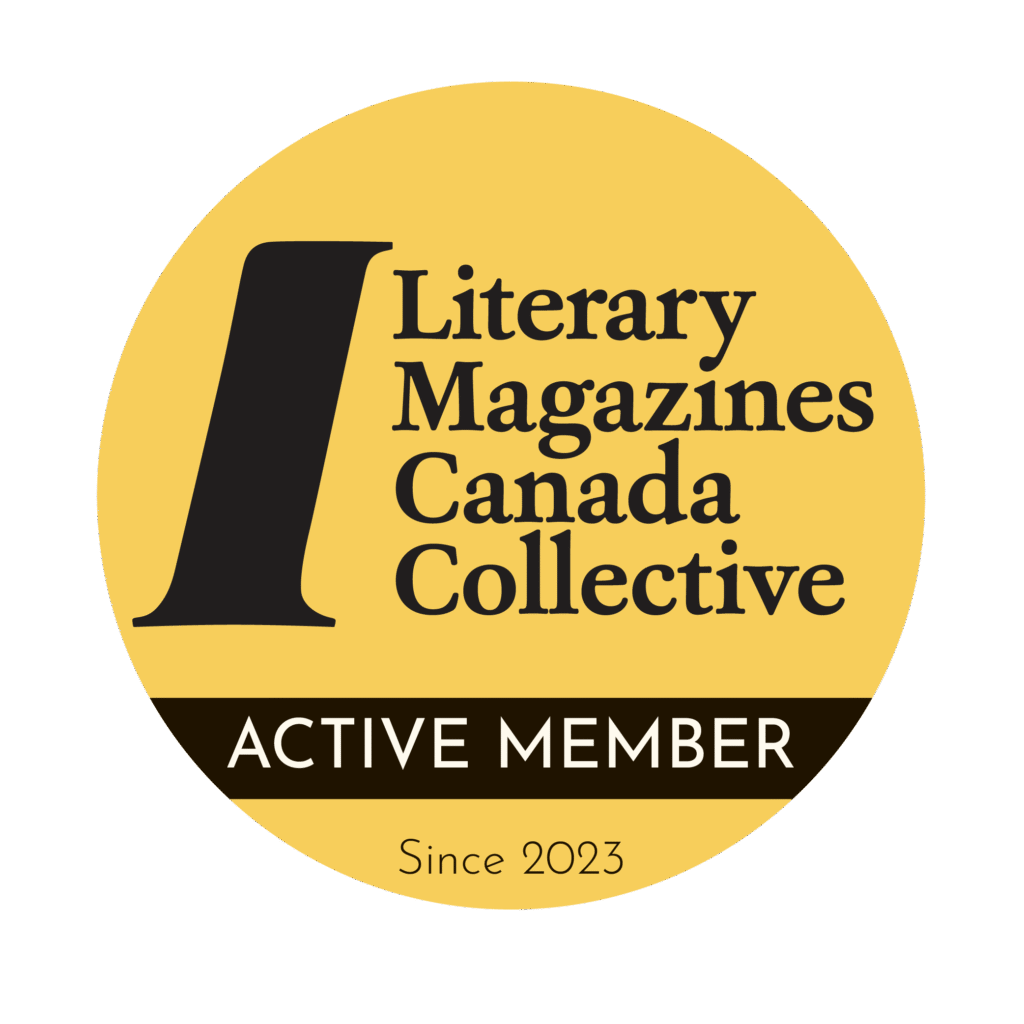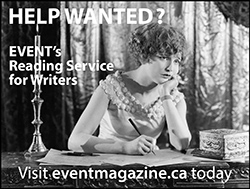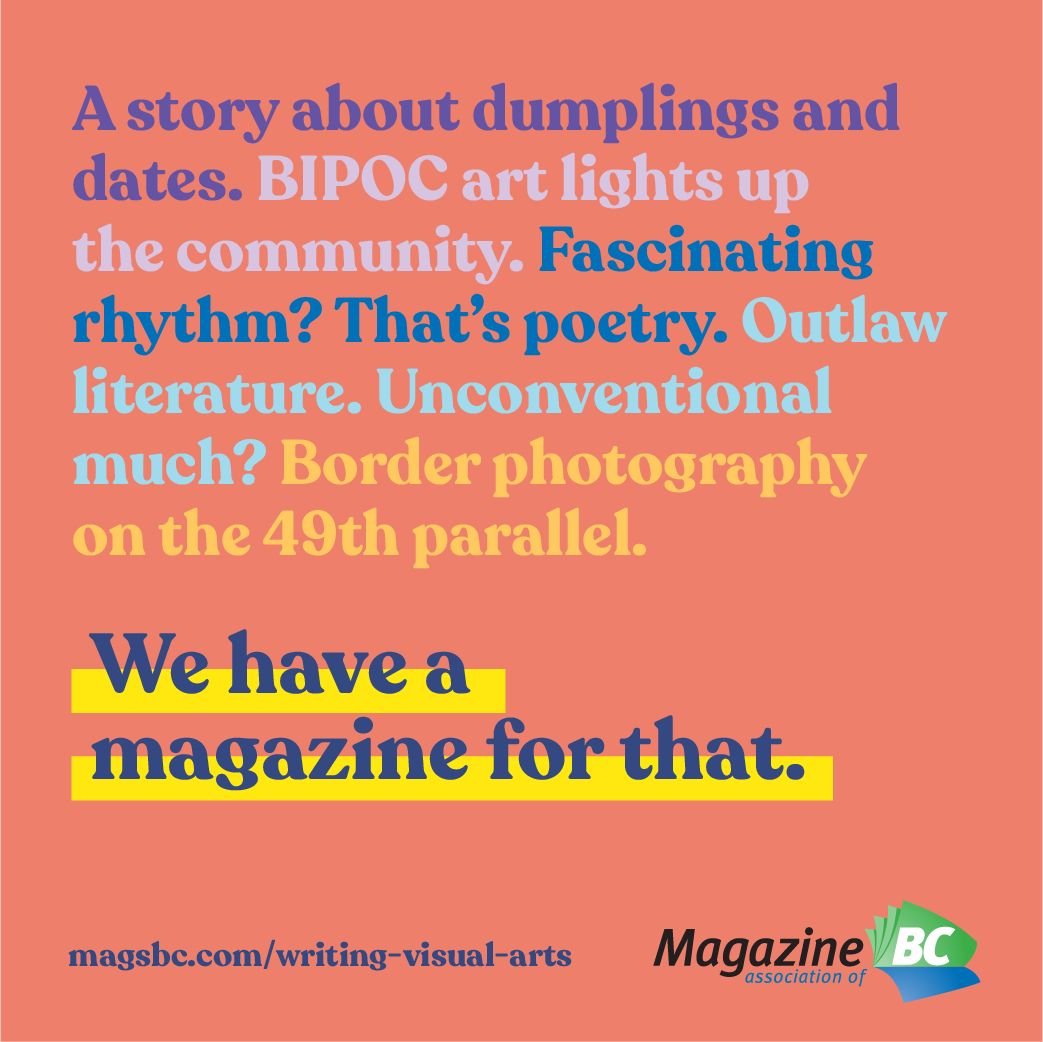For the Love of Crust Fiction: Hannah Macready Interviews Susan Sanford Blades
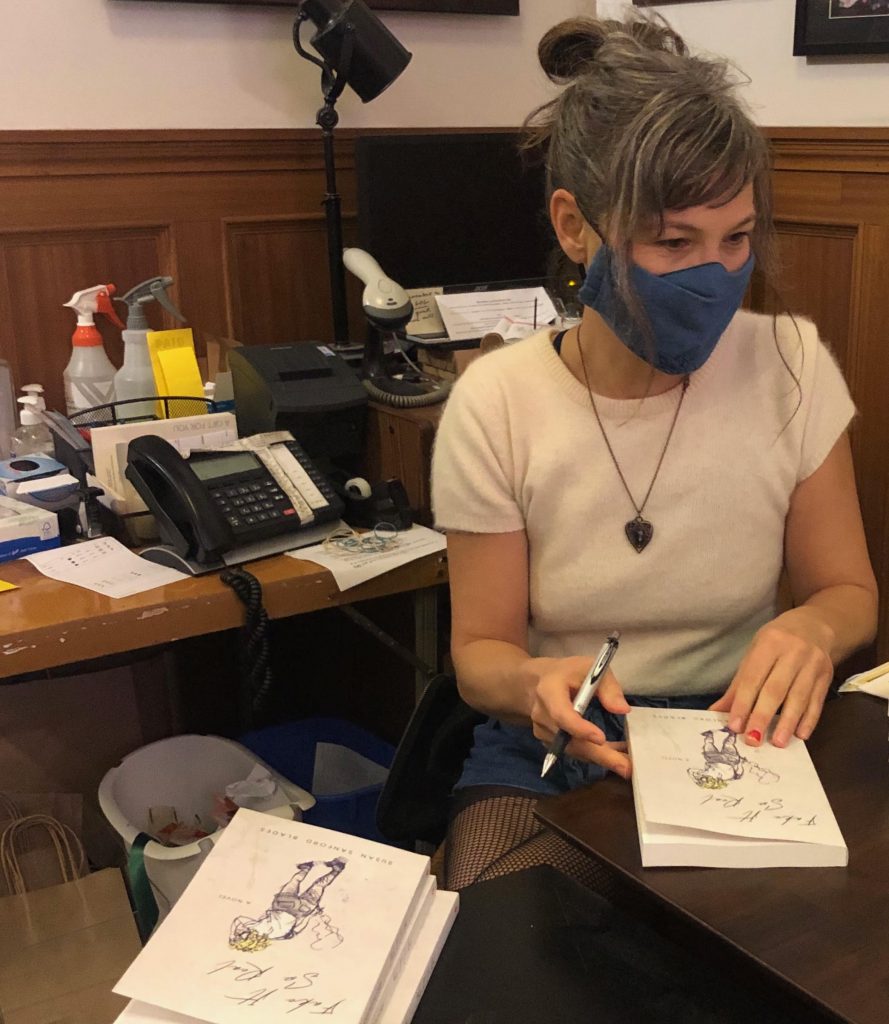
Susan Sanford Blades’s first novel, Fake It So Real, was published by Nightwood Editions in October 2020. Her fiction has appeared in the anthologies The Journey Prize Stories 32: The Best of Canada’s New Writers and Coming Attractions 16 as well as in literary magazines across Canada and in the United States and Ireland. Her latest short story, “We Did Not Destroy Your Public Library,” as read by actor Andrea Scoretz, can be heard on the debut episode of the Stories Less Spoken podcast (aired December 15, 2020).
—
Hannah Macready: Hi Susan! It’s wonderful to have a chance to speak with you. I’ve read your debut novel, Fake It So Real, as well as some of your other short fiction lately, and it’s been a true pleasure. Your short story, “The Rest of Him,” published by EVENT magazine, also recently appeared in the 2020 Journey Prize anthology, so congrats—it’s looking like a good year for you! How has your first book publishing experience gone, and what trials or successes has the pandemic process brought?
Susan Sandford Blades: You’re right—this year has been intense, and good, now that I look back on it. My book was accepted by Nightwood in the beginning of 2020, so all of this happened in this actual calendar year. Getting that acceptance was amazing, as well as being in the Journey Prize anthology. I’ve been wanting to be in the Journey Prize anthology for years now, so that felt like a great accomplishment. The whole book publishing experience, though, has been a roller coaster. Lots of ups and downs. It was a slog trying to find a publisher—I started off with an agent sending it to the bigger publishing houses and when they all rejected it, I didn’t hear from him for ages. When I did get in touch with him, he suggested I not even publish this book because if it didn’t do well, it would make me look unattractive to publishers when I’m trying to sell my next book. I obviously disagreed with him, so I started sending it off to independent publishers myself. The whole process took years, I think.
Like I said, I was really happy to hear that Nightwood liked it. Truly the only downside to this process I think is the business side. It’s something I never thought about, and I think rightly so: we should never write something with marketing in mind, but at the same time, it’s disheartening to know that something you poured yourself into for years is being rejected because it’s not marketable or because nobody knows who you are because you haven’t won any big awards, etc. And of course, that continues now that my book is out. I didn’t realize how difficult it would be to get people to notice my book or to want to carry it in their store or their library. I’m not sure how the pandemic has affected the process, to be honest, other than preventing me from touring with it and forcing me to have a different sort of launch party. I don’t know what it normally feels like to have a book out, so I don’t know!
HM: I have a soft spot for short fiction. It’s certainly my favourite genre and the thing I’m personally best at writing. I think a lot of authors have an idea that short fiction doesn’t make money, or that it’s simply a stepping stone to a novel (I strongly disagree with this thinking). Yet your debut book is a collection of short stories and a novel, simultaneously. Can you talk a bit about how you decided on this structure and what you think the strengths of this choice have been?
SSB: I agree with you about short fiction. I love it. And maybe all fiction writers love it but it’s the industry, the business side of it that loves novels because they sell and so that’s what we end up writing. Having said that, I am attempting to write a novel right now, maybe even just for the challenge of trying something different. But what I do love about a novel is that we get to stay with characters who we love for a longer period of time. So I guess that’s what I wanted to do with my book: keep us with the same cast of characters but give the reader little bursts of their lives, which is what I love about short fiction—you’re given these brief yet poignant moments in a character’s life. And then, by witnessing several poignant moments in these characters’ lives, my hope is that the reader will come away from my book feeling like they really got to know all the characters by watching them go through things and grow through several decades. I’m hoping it feels like the best of both worlds.
HM: Even though your novel is a collection of short stories, it is also linear, which I found fascinating. Each chapter or story stands on its own, yet leads into the next. I think this is especially exciting because, in a sense, you could rearrange the novel and not change the core of the story, just the timeline. How long was the process of writing these? Did you always foresee it becoming a linear novel, did you ever play around with the structure?
SSB: Yeah, well it’s interesting you asked that because I definitely did not write the stories one after another on a linear timeline and I originally did want to arrange them non-linearly. But everyone I sent it to read as a whole said, “Why aren’t the stories linear?” or said they were confused in places so I figured I’d just make it linear. So, I agree that the book could work in a different way; it could tell a bit of a different story if it were arranged differently. Each story is a moment in time, and you could get to know the characters differently by focusing on moments, rather than when these moments occurred, and the character would be revealed to the reader in a totally different way.
HM: A quote from the back of your novel reads, “No one rocks a sentence like Susan Sanford Blades” (Alexander MacLeod), and, after reading your work, I am inclined to agree. I think what I loved most about Fake It So Real (and there was a lot I loved) are the visceral, horrible, beautiful details that you embed into your images. The first scene is fellatio on a diner countertop. Throughout, we find severed feet, food-soaked sheets, and more alcohol smells than I remember from dive bars. Can you tell me how you find inspiration for your images? Do you have any recommendations for others who are looking to improve their use of imagery?
SSB: First of all, thank you! I’m trying to remember all these smells now! Haha. I think, for one thing, I wanted this book to be very honest and raw and that includes not being afraid to describe the body and everything the body does, because it’s just a part of life and true to life. In terms of coming up with good imagery though, I feel like I always have a hard time, too. I spend a lot of time on one description, sort of sifting through images in my head of how best to describe this thing. One hint I have, that I’ve learned from reading Douglas Glover’s books on writing, is that the imagery should fit the mood and theme of the story. Maybe everyone knows this already but I find that helpful. Like, what is this character thinking and feeling? What are they obsessing about, what is their desire that is propelling the story? Every image should attempt to fit with that theme or desire in some way. So, for instance, what I’m writing now has to do with adoption and a girl trying to find her birth mother so I’m trying to infuse a lot of mother-type words—like storks, eggs, wombs, etc.—into the language and the imagery. I’m not always successful at this, but it’s something I’m keeping in mind now, for sure.
HM: You write a lot about family, and severed family, more specifically. Your stories hide alcoholic parents, silent mothers, fathers who are gone, absent, not coming back. Yet, I would say there is a lingering joy within your work that transcends these familial traumas. What about this theme moves your writing? Moreover, what message do you hope to translate to readers through your work?
SSB: I think what happens in our family shapes our relationships throughout our lives, so it’s important to me to explore that. Most of the time it’s an original trauma that haunts you—with varying levels of severity—but I don’t think there are many people who’ve emerged from childhood without any scars. I think sometimes we’ll see a certain family as being outwardly “perfect” and yet there’s a lot of unhappiness lingering beneath the surface. In this book, that’s reversed—the unhappiness is out there for everyone to see, but there is joy lingering under the surface and I kind of prefer it that way. It feels more authentic that way. I was going for authenticity and empathy in this book. I want my readers to feel the love and compassion I have for all of the characters, despite their mistakes, despite some awful things they’ve done or despite the ways they may have mistreated people. And I think this book ended up being about family also because that was weighing heavily on me when I began writing it. I had just separated from my husband, and my kids were still quite young. At the time I didn’t know anyone who had gone through that. The parenting magazines I read didn’t have any articles about divorce. I felt like I had no allies. So partly in writing this book I wanted women who aren’t having the easiest time fitting into patriarchal roles to maybe see a bit of themselves and to feel less alone.
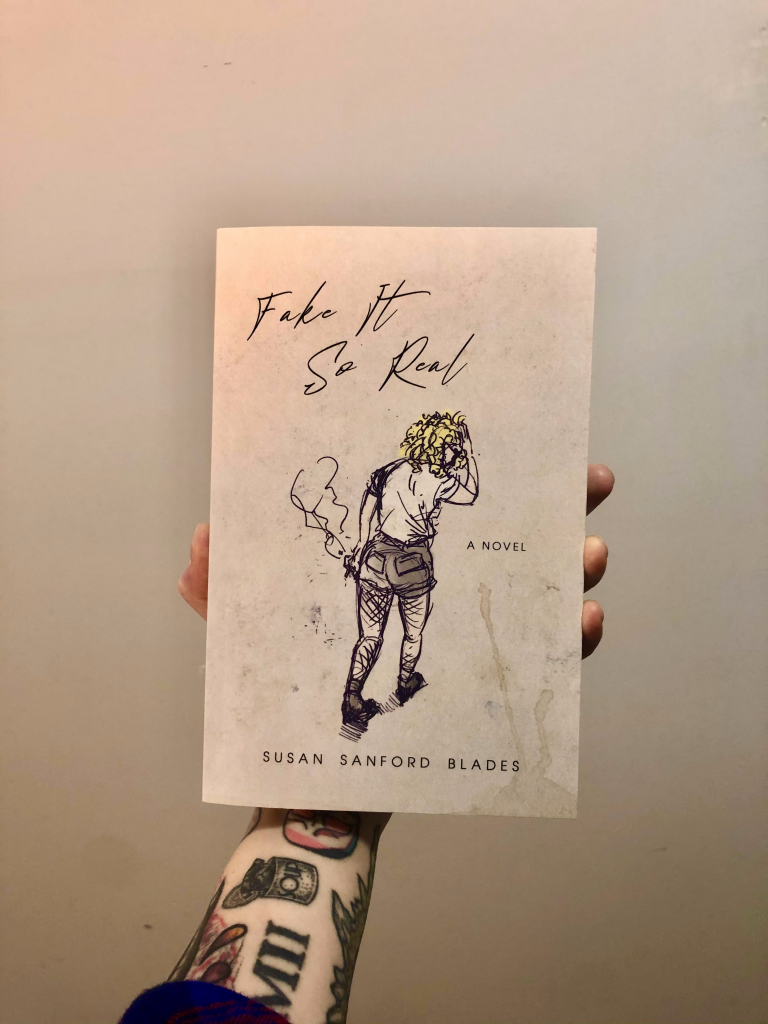
HM: Another recurring theme in your work is the punk rock scene. My mother is an old school punk rocker and she loves telling me stories about growing up smoking cigarettes and wearing shiny, stolen Dr. Martens in Victoria, so this content really spoke to me. You describe it all so viscerally and yet, with large amounts of love. It seems this may be a subculture that is personal to you, and your bio even describes you as a “punk rock Alice Munro” and a writer of “crust fiction.” Can you describe what “crust fiction” means to you, and to your work, and where this genre came from?
SSB: I feel like I should include a disclaimer here that my book isn’t really about the punk rock scene so much as the punk scene serves as a backdrop and that my characters are “punk rock” in the sense that they live on the margins, they follow their own rules, that sort of thing. I recently made the mistake of googling myself and came across this awful, half-star review of my book by someone who threw it away after reading one chapter because it didn’t accurately represent their experience of the punk scene on Vancouver Island. So now I feel like oh god, maybe I shouldn’t be calling it a punk rock book because it’ll make people mad.
In any case, “crust fiction” is a term coined by one of my peers in the MFA program at UVic, Robbie Huebner. He came up with a few terms to classify my work throughout our time in workshop together. I think what he meant was, just as I said, my characters live on the outskirts of what is normal, or what is acceptable—so like on the hard outer edge, the crust of society. That was my interpretation, anyway!
As far as punk itself, I will say that I grew up in the ’90s in Edmonton, Alberta, so was not a part of the early ’80s punk scene in Victoria. My personal influence was riot grrrl, which was a feminist offshoot of the punk scene in the early ’90s, and it definitely helped me to find my voice as a teenaged girl. What I got from riot grrrl and punk, in general, is that it is so liberating and empowering to break conventions and speak out about what moves you. Punk bands generally are not good musicians or good singers. They’re people who, before punk existed, would’ve been laughed out of a record company’s office or what have you. And again, riot grrrl bands were getting up on stage and screaming about the patriarchy in fishnets and bikinis, and this was not even accepted by punk bands at the time, which were mostly male. I feel there’s a lot of power in that—in people doing something even though they’re told they’re not good because they’re not doing what everyone else is doing, and making something really moving and powerful out of that. But to go back to your original question, about the punk-rock Alice Munro thing, I mean, actually, Alice Munro kind of is punk rock, because she was writing about women’s everyday lives at a time when that wasn’t ok, that wasn’t marketable and when fiction was much more of a man’s world. She was ridiculed for that, but she did it anyway, and she was amazing and now someone like me can write about women’s everyday lives and be published because she paved the way.
HM: You had a really cool, mid-pandemic launch party for Fake It So Real that featured: “Books, Drugs, and Rock and Roll.” And you’re currently in the middle of a virtual book tour where you’re chatting with readers of your book and stores that are carrying it. Of course, the pandemic has forced us all to re-evaluate the way we do promotions and I think you’ve done a wonderful job of making it work, despite the restrictions. Can you tell me a little more about these events and what sparked you to create them?
SSB: Yeah, I’m doing what I can! I think this goes back to the punk rock sensibility. I’m just coming up with ideas and making them happen even if they are a bit unconventional. Pandemic or no pandemic, I always wanted to launch my book in a different way. I wanted to have a full-on ’80s dance party but that was not to be, so I created something that was COVID-safe and still fun. I wanted it to reflect the book too, so I decided we’d play music bingo after I did a reading and the playlist was made up of songs that were influenced by the novel’s main characters. The songs were either mentioned in the book, or they reflected the character’s personality or something they went through in the book. I really wanted to do something in person—I’m not a very tech-savvy person, I don’t even own a smartphone—and it meant a lot to me to connect with and celebrate with people in person even though I had to speak to them through plexiglass! The virtual book tour, I kind of just thought of because I was getting some friends to send me photos of them reading the book and I thought why don’t I make this a bit bigger and ask people I know who live across the country to send in photos and their thoughts on the book and then also plug their local bookstores too? I thought writing a little bit about each reader and what they liked about the book would be more interesting than just a photo, and I wanted to show that “ordinary people” read my book—some books it seems are only for writers and they seem intimidating to the average reader, and my book is not that book. This was also sparked by my realization that no bookstores in Canada other than those on Vancouver Island are carrying my book on their shelves. I guess I just wanted to get them to notice the book, but I also really want to encourage people to shop at their local bookstores and not buy books from Amazon, which literally destroys the publishing industry, and any sort of local, independent store.
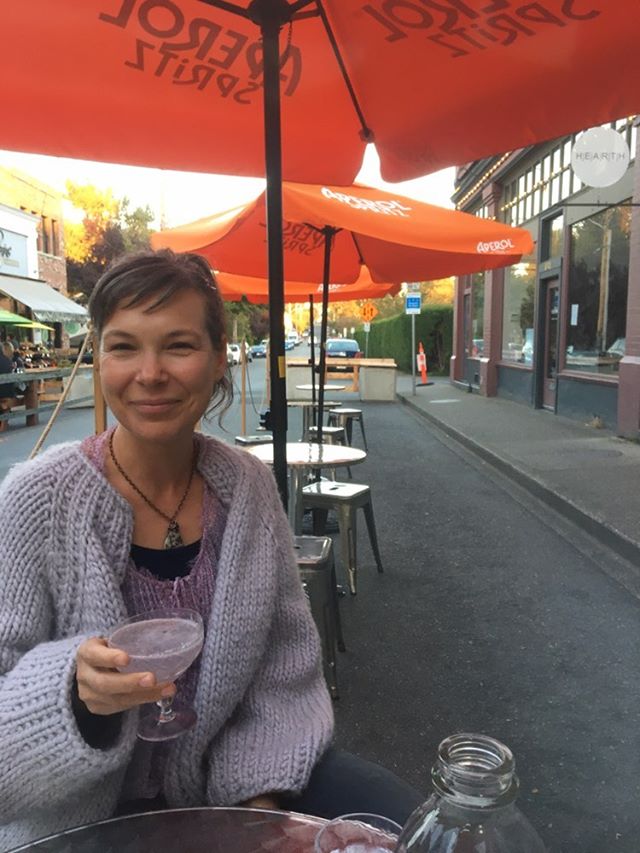
HM: Aside from being a published author, you’re also an active editor. Though writing and editing are often simultaneous, they require very different skills. Not every writer is a good editor, and not every editor can write. That being said, there are always those who transcend these boundaries and I find that mix of skill quite impressive. Can you give me an example about how these two sides of yourself collide and also, maybe, how they conflict?
SSB: The editing I do is mostly editing for APA style, so really nitpicky things like making sure the references list of an academic paper has every period and comma in exactly the right place. I also proofread and I think that actually helped me a lot at the proofing stage with my book. I actually haven’t read the actual hard copy of the book cover to cover but I’m willing to bet there aren’t any typos in it. My eye for detail and inability to let things go may be hindering my writing in terms of making me a super slow writer. I’m working on the second draft of a novel right now and I’d heard that I should just vomit out the first draft and worry about details later—but I couldn’t do it. By the end of my first draft, though, I realized that I needed to write the novel from a completely different point of view and now I have to rewrite the whole thing anyway. So maybe I’ve learned something. Maybe not. Having said that, people have told me that there are not a lot of wasted words in my fiction, so I think that also is the editor in me at work. So I think all in all it’s been really helpful to have that side of my brain working as well as the more creative side.
HM: Thanks again for taking the time to chat with me. I’d like to close this one with a little callback to the wider project and ask a question that was inspired by a previous interview with Kyla Jamieson: Do you believe that our ideas get better or worse over time, and if they change for the worse, should we give up our craft?
SSB: Thanks so much for having me! Oh gosh, I hope our ideas get better over time! I think perhaps, at least in my case, we might start writing about things that are less personal over time and so our writing might change in that way. It might be less intense, less raw, which will be interesting for me because this book is very personal and raw. But at least for now, I continue to have ideas that I’d like to write about that are just percolating until I have the time to devote to them. I used to work at The Malahat Review, and I remember the editor at the time said that when we’re young we write about our lives, and when we get older, we write about other people’s lives. So maybe that’s the transition, and the ideas are not better or worse, they’re just less personal, but they will still involve human emotion and human desire and so one would hope, we can always draw on something within ourselves to add to the ideas.
—
Hannah Macready lives in Vancouver, BC. This interview was originally published by her Amateurs Project.





